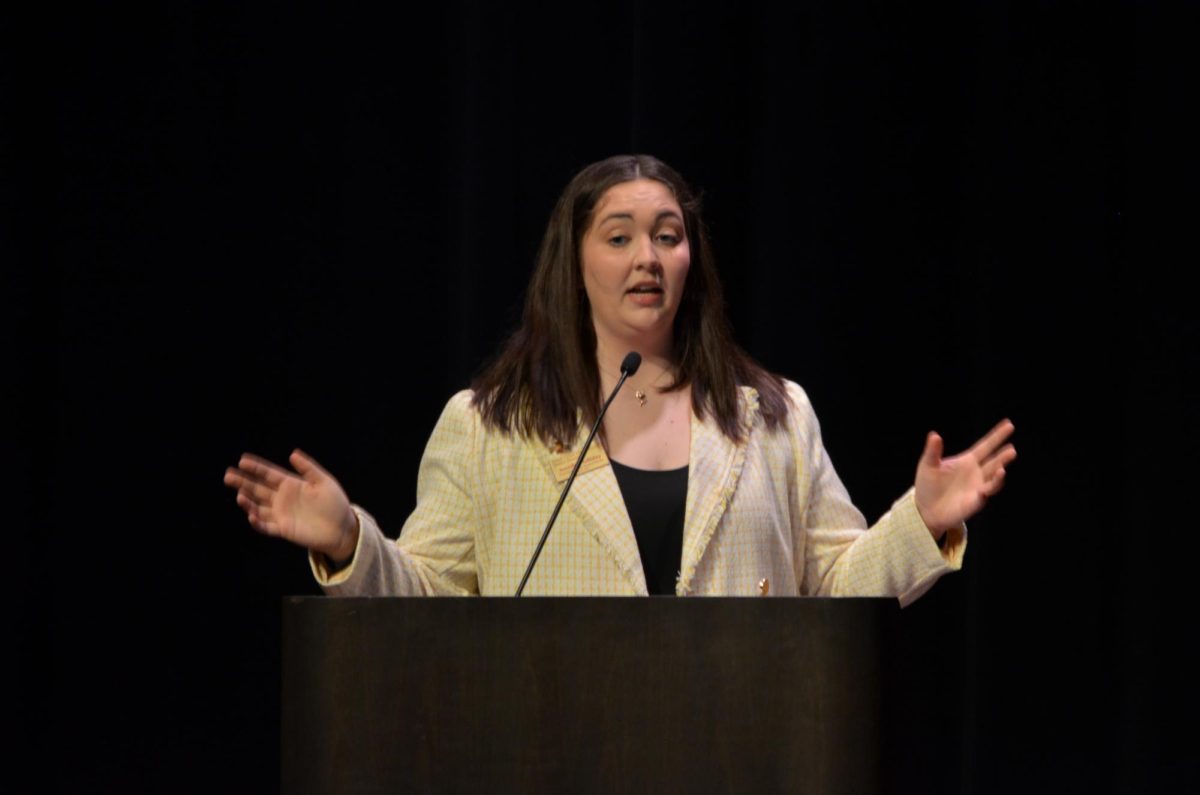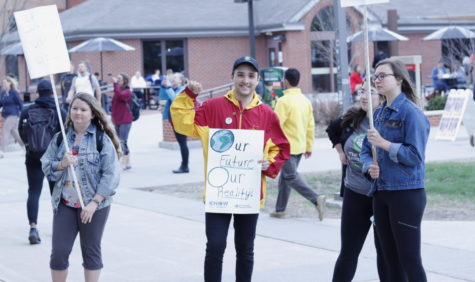Environmental Health and Safety deals with hazards, educates public
April 3, 2011
Iowa State handles many forms of chemical and biological research, and the Department of Environmental Health and Safety handles the hazardous materials that may be produced from the research.
“Any time you’re going to put in something, something’s going to leave your facility,” said William Diesslin, assistant director of the department. “Whether it’s going to be exhaust gas from a stack, waste going down a drain or leaving in a garbage truck, any time something’s leaving your facility, that’s going to be regulated by the [Environmental Protection Agency].”
“A big part of what we do is help campus follow those rules; we help researchers follow those rules.”
The department does a variety of tasks including chemical and radioactive waste management, emergency responses, fire safety, lab inspections, handling the pathological wastes produced from the vet med college, monitoring buildings for asbestos and training individuals about hazardous material safety.
“If you came to campus and were going to work with chemicals or work with a radioactive material, it can’t just be handed to you; people have to train themselves, and they have to be trained on what to do in case of an emergency; they have to be trained on what to do with the material when they’re done,” Diesslin said.
Environmental Health and Safety trains about safety both in person and online to accomodate with busy schedules.
Provided inside the Environmental Health and Safety Services building is a practice lab, where students can simulate situations, handling any sort of accident with real equipment.
“A person who is a researcher, they would look at this lab and say this is a schizophrenic lab, because it’s a wet, organic chemistry lab that all of a sudden turns into a biolab, that turns into a rad lab,” Diesslin said.
“We have simulated spills in here, we have simulated accidents, we’ve even made it look like somebody had cut themselves and got blood out and had to do a blood pathogen clean up.”
Along with training sessions, the department provides an academic program for students to learn about different safety procedures within research and industries.
“The academic program we have on campus runs through the department of agricultural and biosystems engineering, and they deal mainly with safety as involved with industry and manufacturing,” said David Inyang, director of Environmental Health and Safety.
“We provide interships for students and extend the opportunity to students of all disciplines,” Inyang said.
Environmental Health and Safety collaborates with the Department of Agriculture and Biosystems Engineering to make sure students have real life experiences, offering classes like chem 550, to introduce students to the federal laws involved when handling hazardous chemicals.
“It’s a challenge nationally because the pool of people who can do work that we do here is diminishing, and we need to do something,” Inyang said.
The department takes initiative to not only educate students but monitor the numerous amount of fire extinguishers on campus, as part of their fire safety program.
“We maintain over 5,000 fire extinguishers on campus, and we have to keep track of them and where they are; people have to be trained how to use them,” Diesslin said.
Fire extinguishers have a powder in them that will settle and become solid if it sits long enough. As a result, nothing will come out when the fire extinguisher is used.
“On a routine schedule, we’ll take them off, bring them here, physically remove everything from them, hydrostatically test the tank, dry it, refill it and put them back into service,” Diesslin said.
The department monitors the fire extinguishers on campus, and they also look at the plans that are taken into consideration whenever a new building will be constructed on campus.
“We look at the plans, we make sure that all the life-safety fixtures are at place at the completion of the building before the university takes the building over, we conduct an occupancy-readiness review, we walk through the building and make sure all those life-safety things are in place and are working properly before we realize the building,” Inyang said.
When the department isn’t monitoring a fire extinguisher or building plan, they monitor radioactive material before and after it is used for research.
“Any time somebody buys a material that’s radioactive, that doesn’t just get sent to the laboratory, it gets sent to us. We have to make sure that the box it came in isn’t contaminated,” Diesslin said.
“When those packages come, we check the whole outside of them, and then we unpackage it and check everything to make sure it didn’t leak, and then we verify that it’s what they said it was and that they are authorized to have it. Then we deliver it to the person; when they’re done using it, they give us the waste.”
All hazardous material is first reported to Environmental Health and Safety. The department then drives to the laboratory to pick up the waste, unloads the waste material inside the loading dock, which is concealed in case any waste were to leak out; the waste is then sorted by category and stored until it’s ready to be disposed of by an outside vendor.
Some wastes can be stored for reuse by other scientists on campus, providing a free service for their research, and fewer cleanup expenses for the department.
“[The building] can store leftover chemical materials,” Diesslin said,
“Instead of throwing it away, we photograph the container, we put it on our webpage, and it’s just like eBay Inc. — you go on there, you’ll see a picture of it and what a researcher will do. Let’s say somebody on campus needs some sodium chloride. They’ll go to the webpage, and they can send a request to [Environmental Health and Safety], which will deliver it to that researcher for free.
In case of an emergency, such as a chemical spill, the fire department is responsible for stopping the waste, but Environmental Health and Safety is responsible for providing the fire department with information and cleaning the mess afterwards.
“Everyone on campus has an inventory of their chemicals. The fire department will go ‘Wait a minute, can we go in?’ We’ll show up, we’ll look at the inventory and say, ‘OK, looks fine to go in,’ or, ‘Yeah, but you better wear a respirator’,” Diesslin said.
“We act as specialists for them, we answer their questions about what kind of chemical it is, we have the material safety data sheets on the chemicals and we can tell them what to expect,” Inyang said.
In case there isn’t an emergency with handling hazardous chemical materials at the laboratory, the department also takes responsiblity in stabilizing unstable chemical materials, making them safe for transportation.
With safety on campus being the department’s primary focus, the building has its own security system.
The doors to the waste management facility inside the building monitor who and when someone enters, limiting access to the workers there.
“We have a special key card that works for workers who need to get in there,” Inyang said.
No one can enter the building from the outside, except for the loading dock, which requires a code to gain access to.
Inside the building, every room that stores the wastes has a slanted floor in case of a spill to contain the wastes. If the waste gets to be too much, it is then transported down a floor drain, located in each storage room, and from there the waste would be stored in an underground tank.
If the underground tank were to overflow, the waste would then be transported to a constructed pond specified for the waste materials.
“The idea of that ponding area is that by the time things get out of hand, what we do is to bring a vac truck to suck out anything that is in there,” Inyang said.
With safety being the department’s top priority, they work on a daily basis to treat hazardous wastes, monitor labs on campus and encourage more student involvement.
















